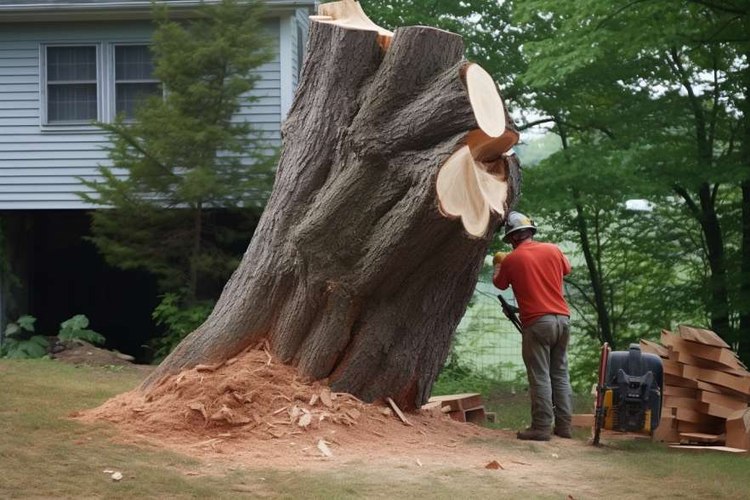Learn About the Factors Influencing Tree Removal Costs in the United Kingdom in 2025
Did you know tree removal costs in the United Kingdom can range from £150 to over £2,500 depending on size, location, condition, and method? Discover key insights to help you better understand what affects pricing and the practical considerations involved.

Tree removal is not a straightforward job, and costs vary significantly based on many aspects. This article offers a detailed, comprehensive overview of what influences tree removal expenses in the UK this year, assisting you in budgeting properly and understanding potential variables.
How Much Does It Cost to Cut Down a Tree in 2025?
- Average UK tree removal cost: Approximately £400
- Price range: From about £150 to over £2,500
- Typical daily labour rate for a tree surgeon: £250 - £460 per day (average around £375)
The broad range in price reflects the nature of tree surgery tasks, including variations in tree sizes and complexities. Larger, older, or more inaccessible trees require more tools, labour, and time.
How Tree Size Influences Removal Costs
Tree size is a major factor impacting the cost. The bigger the tree, the more challenging and risky the task:
- Small trees (under 25 ft): Approximately £150 - £350
- Medium trees (25-50 ft): Approximately £200 - £750
- Large trees (50-75 ft): Approximately £650 - £1,200
- Extra-large trees (over 75 ft): Approximately £1,000 - £2,500+
Larger trees may require specialised equipment like elevated platforms, wood chippers, and extra safety precautions. Their removal generally takes longer compared to smaller trees.
The Difference Between Tree Removal and Tree Felling
- Tree felling: The tree is cut at its base and allowed to fall. This approach is often less expensive but requires sufficient, safe space for the tree to fall without causing damage.
- Tree removal (dismantling): Branches and trunk sections are cut and lowered piece-by-piece, frequently using climbing arborists or machinery. This method is safer for urban or confined areas but can be more labour-intensive and costly.
The appropriate method depends on your location and tree positioning, with urban settings usually requiring dismantling, which may raise costs.
How Location and Accessibility Affect Pricing
Urban areas such as London and the South East usually have higher prices than rural regions due to:
- Limited space for equipment
- Risks posed to nearby buildings, vehicles, and pedestrians
- Presence of overhead utilities and power lines needing extra precautions
Trees positioned in hard-to-reach areas, like narrow backyards or behind obstacles, might incur additional fees reflecting longer work times and special equipment demands.
Additional Costs to Consider
Removing the tree itself is only part of the total cost. Other common expenses may include:
- Stump grinding or removal: Roughly £100 - £500 depending on stump size and root depth. Removing the stump can prevent regrowth and improve appearance.
- Waste removal and disposal: Costs depend on volume and local disposal rules.
- Permissions for public road or footpath closure: May involve administrative fees if tree work affects public access.
- Arborist tree health surveys: Usually £250 - £350 to evaluate tree condition and any legal aspects.
These extra services help ensure the job is done safely and compliantly, reducing risks.
Seasonal Timing and Its Effect on Costs
Tree removal prices can fluctuate seasonally:
- Off-peak months: Late autumn to late winter (November to February) often see lower demand, potentially reducing costs by 10-20%.
- Peak months: Spring and summer generally have higher prices, partly due to bird nesting seasons and increased gardening activity.
Scheduling during off-peak periods may offer savings and reduced environmental impact.
Legal Considerations and Necessary Permissions
Before removing a tree on your property, take into account:
- Tree Preservation Orders (TPOs): Protected trees require council approval before removal. Illegal felling can lead to fines or prosecution.
- Conservation area restrictions: May require permissions similar to TPOs.
- Neighbour and public rights: Blocking public paths without permission is prohibited; neighbours have rights concerning overhanging trees.
Consulting a professional arborist or local authority before starting is advisable to avoid legal issues.
Factors Contributing to Tree Removal Costs
Tree removal involves risks and specialised skills, which can increase costs because of:
- Hazardous conditions needing expert professionals
- Use of specialist equipment such as chainsaws, aerial lifts, and wood chippers
- Insurance premiums covering liability and possible property damage
- Labour-intensive processes often requiring multiple workers for safety
Costs mainly reflect the complexity and risk involved rather than excessive profit margins.
Tips for Managing Tree Removal Costs
To manage your tree removal expenses effectively:
- Obtain several detailed quotes from qualified and insured professionals
- Provide full details about your tree (photos, size, species, location) for accurate estimates
- Confirm whether services like stump removal, waste disposal, and permit applications are included in quotes
- Consider scheduling work during off-peak seasons if possible
- Check for any tree protections or legal requirements before proceeding
These steps can help avoid surprise costs and ensure the work is safe and compliant.
Summary
The average cost to cut down a tree in the United Kingdom in 2025 is about £400, with a broad potential range from roughly £150 to over £2,500. Influencing factors include tree size, location, accessibility, removal method, and timing. Additional fees may apply for stump grinding, waste disposal, permits, and health assessments.
Careful planning, collecting multiple quotes, and understanding legal considerations can help you manage the tree removal process more effectively and plan your budget accordingly.
Sources
- Airtasker - Tree removal cost UK
- MyBuilder - Tree removal cost guide
- TreeMend - Tree surgeon prices 2025
Disclaimer: All content, including text, graphics, images and information, contained on or available through this web site is for general information purposes only. The information and materials contained in these pages and the terms, conditions and descriptions that appear, are subject to change without notice.




